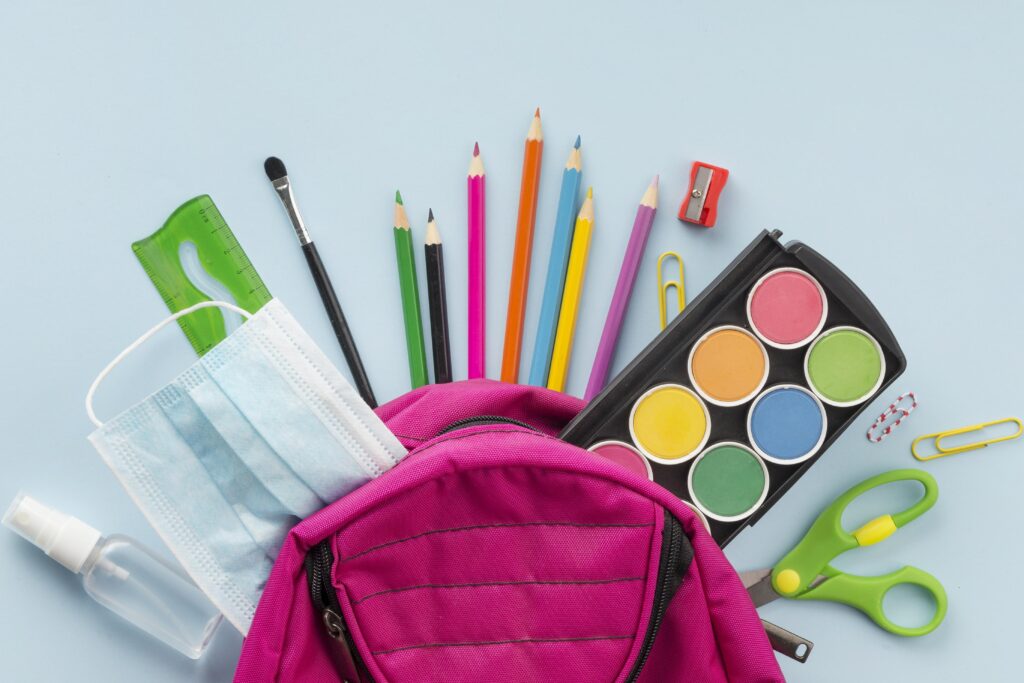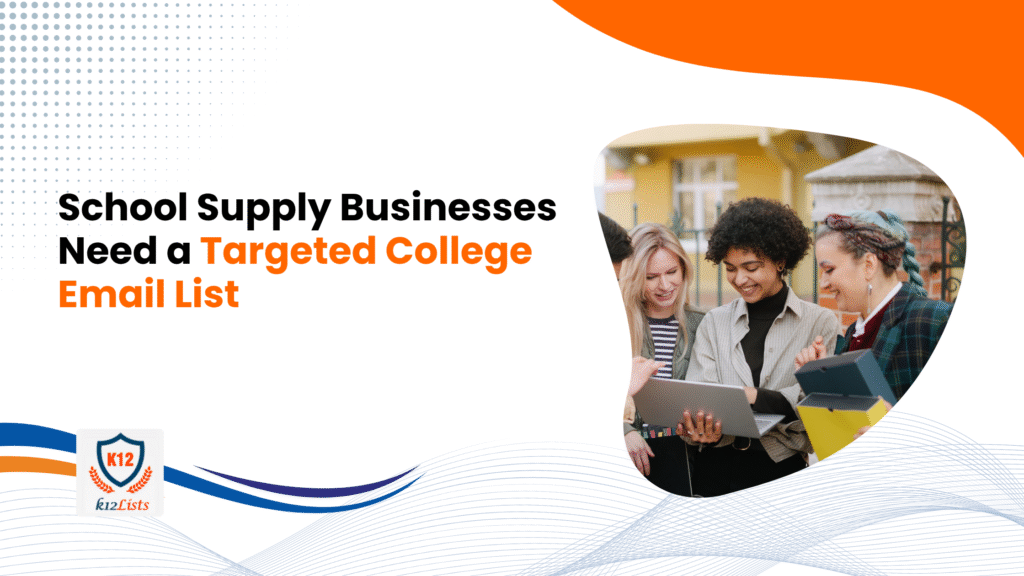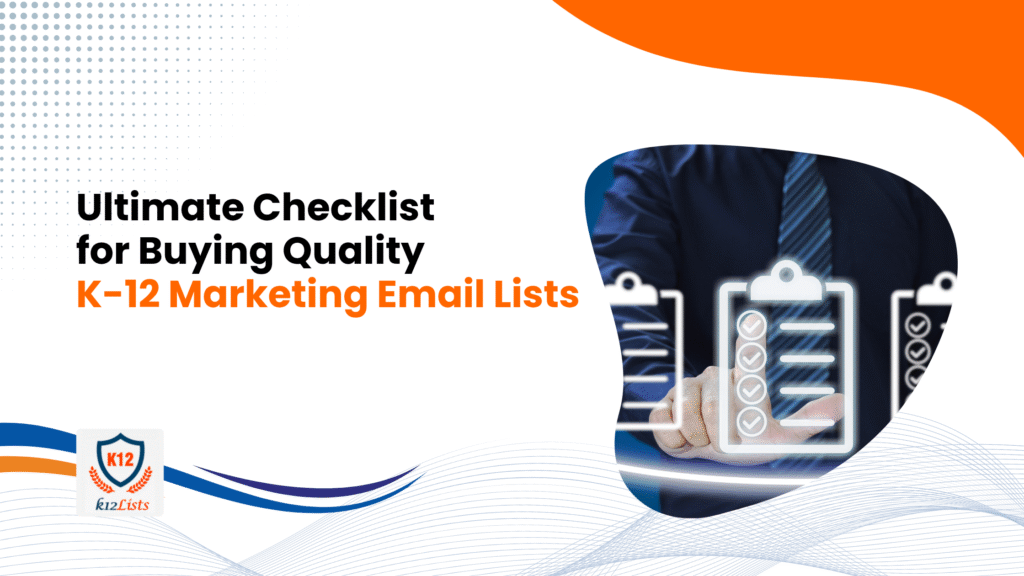The education sector is a thriving and essential market, especially for businesses providing school supplies. From stationery and furniture to edtech tools and STEM kits, the demand is consistent—but the competition is fierce. In this environment, direct outreach to decision-makers in schools is not just helpful—it’s critical. That’s where targeted email lists come into play.
This blog explores how a well-curated school email list can fuel B2B sales, help vendors build strong relationships with educational institutions, and ensure their messaging lands exactly where it matters most.
Understanding the Educational B2B Landscape
Selling to schools is unlike selling to other businesses. The buying process is often influenced by:
- Budget cycles and funding approvals
- Multiple decision-makers (principals, superintendents, procurement officers)
- Educational standards and curriculum needs
- Regulatory constraints around student safety and data privacy
Understanding this landscape means recognizing that schools value trust, reliability, and long-term partnerships. Your outreach needs to reflect that—starting with getting in touch with the right people at the right time.
The Power of Email Marketing for B2B School Supply Sales
Email remains one of the most cost-effective and targeted marketing channels in the B2B space. For school supply vendors, email marketing offers:
- Direct access to school decision-makers
- Personalized engagement with administrators based on location, grade level, or school type
- Timely promotions aligned with back-to-school seasons, funding periods, or curriculum changes
- Scalable communication that reaches hundreds or thousands of schools efficiently
Unlike cold calls or generic ads, email marketing allows your message to land in the inbox of someone who has the authority—and the interest—to act on it.
Building Your Foundation: The Right School Email Lists
The success of your outreach depends entirely on the quality of your email list. Here’s what to look for:
1. Segmentation Options
Effective Email lists let you target by:
- School type (public, private, charter)
- Grade level (elementary, middle, high school)
- Job titles (principals, superintendents, purchasing agents)
- Location (state, city, or district)
2. Data Accuracy and Verification
Choose a provider like K12 Lists, offers regularly updated, verified contact information to reduce bounce rates and improve deliverability.
3. Permission-Based Contacts
Ensure compliance by using opt-in lists that respect privacy laws like CAN-SPAM and FERPA.
With a reliable school email list, you’ll avoid wasting time and money on ineffective outreach—and instead focus on building genuine connections.
Crafting Compelling Email Campaigns for Schools
Once you have the right list, it’s time to build campaigns that speak directly to your audience. Keep these tips in mind:
1. Solve Their Problems
Lead with value. Show how your product improves student outcomes, simplifies teaching, or saves time and money.
2. Use Clear, Benefit-Driven Subject Lines
Example:
“Cut Classroom Supply Costs by 30%—Here’s How”
3. Include Testimonials and Case Studies
Show real-world results from other schools using your products.
4. Design for Mobile and Accessibility
School administrators often check emails on mobile. Keep your design clean, responsive, and readable.
5. Include a Strong CTA
Guide recipients toward a demo, downloadable brochure, or direct consultation.
Leveraging Email Lists for Different Sales Goals
Your school email list can serve multiple objectives:
🔄 Lead Generation
Introduce your brand to new schools, generate interest with helpful resources, and grow your pipeline.
🛍️ Product Launches
Announce new products or seasonal bundles to a segmented list of potential buyers.
💬 Relationship Building
Send newsletters, how-to guides, or usage tips to keep schools engaged even between purchase cycles.
🔁 Reactivation Campaigns
Target lapsed customers or inactive leads with tailored offers or product updates.
With the right strategy, a single list can serve short-term goals and long-term growth.
Measuring and Optimizing Your Email Marketing ROI
You can’t improve what you don’t measure. Here’s what to track:
| Metric | Why It Matters |
| Open Rate | Indicates subject line effectiveness and audience interest |
| Click-Through Rate (CTR) | Measures engagement with your content and CTA |
| Conversion Rate | Tracks actual product inquiries, purchases, or signups |
| Bounce Rate | Reveals list quality and email deliverability issues |
| Unsubscribe Rate | Helps assess relevance and message frequency |
Use tools like Mailchimp, ActiveCampaign, or HubSpot to monitor performance, A/B test content, and fine-tune future campaigns.
Compliance and Best Practices in Educational Email Marketing
Schools are particularly sensitive to privacy and spam. Follow these best practices:
- ✅ Use opt-in lists from reputable sources like K12 Lists
- ✅ Include a clear unsubscribe link
- ✅ Personalize emails without being intrusive
- ✅ Avoid aggressive sales tactics—focus on solutions, not pressure
- ✅ Familiarize yourself with CAN-SPAM, FERPA, and local education department guidelines
Respect and professionalism go a long way when marketing to educators.
Conclusion
Selling school supplies in the B2B space isn’t just about product quality—it’s about connection. A targeted, compliant, and personalized email marketing strategy can help you break through the noise, engage decision-makers, and grow your sales pipeline effectively.
By investing in a high-quality school email list and crafting campaigns that resonate, you’re not just selling—you’re building trust, offering solutions, and becoming a reliable partner in education.
Ready to supercharge your outreach? Start with a trusted partner like K12 Lists to access verified, segmented school contact data and unlock better B2B results.







